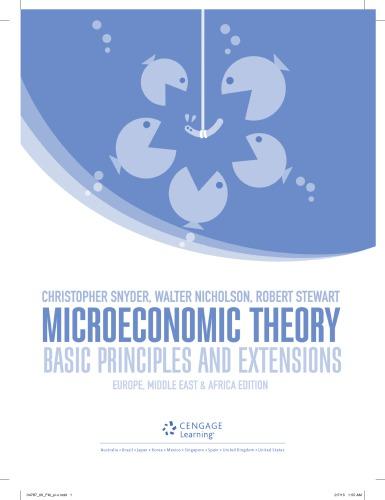11.3 What is the industrys long-run supply schedule? What is the long-run equilibrium price (P*)? The total
Question:
11.3 What is the industry’s long-run supply schedule?
What is the long-run equilibrium price (P*)?
The total industry output (Q*)? The output of each irm (q*)? The number of irms? The proits of each irm?
The short-run total cost function associated with each irm’s long-run equilibrium output is given by C(q) = 0.5q 2 − 10q + 200.
Calculate the short-run average and marginal cost function. At what output level does short-run average cost reach a minimum?
Calculate the short-run supply function for each irm and the industry short-run supply function.
Suppose now that the market demand function shifts upward to Q = 2000 – 50P. Using this new demand curve, answer part
(b) for the very short run when irms cannot change their outputs.
In the short run, use the industry short-run supply function to recalculate the answers to (b).
What is the new long-run equilibrium for the industry?
Suppose that the demand for skateboard is given by Q =1500 − 50P and that the long-run total operating costs of each skateboard manufacturer in a competitive industry are given by C(q) = 0.5q 2 − 10q.
Entrepreneurial talent for skateboard manufacturing is scarce. The supply curve for entrepreneurs is given by QS = 0.25w, where w is the annual wage paid.
Suppose also that each skateboard manufacturer requires one (and only one) entrepreneur (hence the quantity of entrepreneurs hired is equal to the number of firms). Long-run total costs for each firm are then given by C(q, w
) = 0.5q 2 − 10q + w.
a.
What is the long-run equilibrium quantity of skateboards produced? How many skateboards are produced by each irm? What is the long-run b.
Step by Step Answer:

Microeconomic Theory Basic Principles And Extensions
ISBN: 9781473729483
1st Edition
Authors: Christopher M Snyder, Walter Nicholson, Robert B Stewart






